Climate Change and Biodiversity: Impacts, Interactions, and Solutions
Climate change is one of the most pressing global challenges of our time, significantly impacting biodiversity and the ecosystems that support life on Earth. The intricate relationships between climate change and biodiversity are complex, involving numerous direct and indirect effects that can destabilize ecosystems and threaten species survival. This essay explores the impacts of climate change on biodiversity, the mechanisms of these interactions, the consequences for ecosystems and human well-being, and potential strategies for mitigating these effects.
Understanding Climate Change
Definition and Causes
Climate change refers to significant and lasting alterations in temperature, precipitation, wind patterns, and other elements of the Earth’s climate system. While natural processes have contributed to climate variability over geological time scales, the current phase of climate change is primarily driven by human activities, particularly the burning of fossil fuels, deforestation, and industrial processes that release greenhouse gases (GHGs) such as carbon dioxide (CO2), methane (CH4), and nitrous oxide (N2O) into the atmosphere.
Current Trends
Global average temperatures have risen by approximately 1.2 degrees Celsius since the late 19th century, with projections suggesting an increase of 1.5 to 2 degrees Celsius above pre-industrial levels by 2040 if current trends continue. This warming is accompanied by changes in precipitation patterns, more frequent and severe extreme weather events, sea-level rise, and ocean acidification.
Biodiversity: Importance and Status
Definition and Importance
Biodiversity refers to the variety of life on Earth, encompassing the diversity of species, ecosystems, and genetic variation within species. It is essential for ecosystem health, providing critical services such as food production, pollination, water purification, disease regulation, and climate stabilization. High biodiversity enhances ecosystem resilience, allowing systems to better withstand environmental changes and recover from disturbances.
Current Status of Biodiversity
Despite its importance, biodiversity is facing unprecedented declines. According to the World Wildlife Fund’s Living Planet Report, populations of mammals, birds, fish, reptiles, and amphibians have declined by an average of 68% since 1970. Habitat destruction, pollution, overexploitation, and invasive species have historically driven these declines, but climate change is emerging as a significant threat.
Impacts of Climate Change on Biodiversity
- Habitat Loss and Alteration
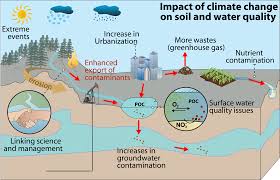
Climate change can lead to the loss and alteration of habitats critical for various species. As temperatures rise, ecosystems such as forests, wetlands, and coral reefs are increasingly stressed. For example:
- Forests: Shifts in climate zones can cause forests to migrate poleward or to higher altitudes, but the rate of change often exceeds the ability of trees to migrate, leading to habitat loss.
- Coral Reefs: Increased ocean temperatures cause coral bleaching, a phenomenon that weakens coral and makes them susceptible to disease and mortality. The 2016 global bleaching event, exacerbated by El Niño, resulted in widespread coral loss across the Great Barrier Reef.
- Species Distribution and Range Shifts
Many species are forced to migrate to cooler areas as their habitats become inhospitable. This shift can lead to:
- Range Expansion: Some species may benefit from climate change, expanding their ranges into new territories. For example, certain bird species are moving northward in response to warmer temperatures.
- Range Contraction: Conversely, species with limited mobility or specialized habitat requirements may face extinction. For instance, the golden toad of Costa Rica is believed to have gone extinct largely due to climate-related changes in its habitat.
- Phenological Changes
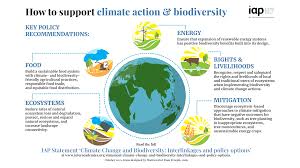
Climate change affects the timing of biological events, such as flowering, breeding, and migration. This phenomenon, known as phenology, can disrupt ecological relationships. For instance:
- Mismatch in Timing: If one species, such as a plant, blooms earlier due to warmer temperatures, it may not coincide with the arrival of pollinators, leading to reduced reproduction and survival rates.
- Disruption of Food Webs: Changes in the timing of migrations can lead to mismatches in predator-prey interactions, impacting food availability and population dynamics.
- Ocean Acidification
Increased levels of CO2 are not only raising global temperatures but also leading to ocean acidification, as excess CO2 is absorbed by the oceans. This change can have severe implications for marine biodiversity, particularly for calcifying organisms such as corals, mollusks, and some plankton species.
- Coral Reefs: Ocean acidification compromises the ability of corals to build their calcium carbonate skeletons, leading to weakened reef structures that support diverse marine life.
- Marine Food Webs: Changes in the availability of key species due to acidification can ripple through marine ecosystems, affecting fish populations and the communities that depend on them.
- Increased Frequency of Extreme Weather Events
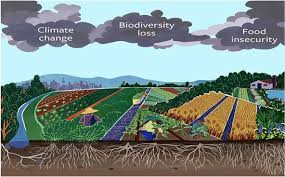
Climate change is associated with a higher frequency and intensity of extreme weather events, including hurricanes, droughts, and wildfires. These events can have devastating effects on biodiversity:
- Wildfires: Increased temperatures and prolonged droughts can lead to more frequent and intense wildfires, destroying habitats and threatening species. For example, the 2020 Australian bushfires devastated vast areas, impacting numerous species and leading to significant biodiversity loss.
- Flooding and Storm Surges: Coastal habitats are particularly vulnerable to flooding and storm surges, which can lead to habitat loss for species that rely on these ecosystems.
Consequences for Ecosystems and Human Well-Being
The impacts of climate change on biodiversity have far-reaching consequences for ecosystems and human well-being.
- Ecosystem Services Disruption
Biodiversity underpins ecosystem services that are crucial for human survival, including:
- Food Production: Changes in species distribution and declines in pollinator populations can threaten food security, as many crops rely on specific pollinators.
- Water Regulation: Healthy ecosystems regulate water cycles and improve water quality. Biodiversity loss can disrupt these functions, leading to water scarcity and pollution.
- Climate Regulation: Ecosystems like forests and wetlands act as carbon sinks, sequestering CO2 and helping mitigate climate change. Biodiversity loss reduces the capacity of these ecosystems to regulate the climate effectively.
- Economic Impacts
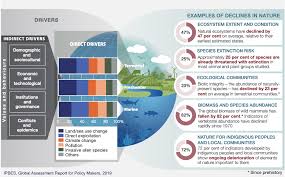
The loss of biodiversity can have significant economic implications, particularly for industries reliant on natural resources:
- Fisheries: Overfishing, habitat degradation, and climate change threaten fish populations, impacting the livelihoods of millions of people who depend on fishing.
- Tourism: Biodiversity-rich areas attract tourists, contributing to local economies. Climate change impacts on natural attractions, such as coral reefs and wildlife habitats, can diminish tourism revenue.
- Health Risks
Biodiversity loss can also affect human health:
- Emerging Diseases: Changes in ecosystems can alter the dynamics of disease transmission. For example, habitat loss can increase human-wildlife interactions, potentially leading to the spillover of zoonotic diseases.
- Mental Health: Access to nature and biodiversity contributes to mental well-being. The degradation of natural spaces can reduce opportunities for recreation and connection to the environment.
Strategies for Mitigation and Adaptation
Addressing the intertwined challenges of climate change and biodiversity loss requires a multifaceted approach that includes mitigation and adaptation strategies.
- Mitigation of Climate Change
- Reducing Greenhouse Gas Emissions: Transitioning to renewable energy sources, improving energy efficiency, and implementing carbon capture technologies can help reduce emissions.
- Enhancing Carbon Sequestration: Protecting and restoring forests, wetlands, and grasslands can enhance their role as carbon sinks, helping to mitigate climate change.
- Conservation of Biodiversity
- Protected Areas: Establishing and effectively managing protected areas can safeguard critical habitats and species from the impacts of climate change.
- Biodiversity Corridors: Creating corridors that connect fragmented habitats allows species to migrate in response to changing conditions, enhancing resilience.
- Sustainable Land Use Practices: Implementing sustainable agricultural practices, forestry, and fisheries management can minimize impacts on biodiversity and promote ecosystem health.
- Ecosystem-Based Adaptation

- Restoration of Ecosystems: Restoring degraded ecosystems can enhance their resilience to climate change, supporting biodiversity and ecosystem services.
- Integrating Biodiversity into Climate Planning: Incorporating biodiversity considerations into climate adaptation planning ensures that both climate resilience and biodiversity conservation are prioritized.
- Community Engagement and Education
- Raising Awareness: Educating communities about the importance of biodiversity and climate change can foster stewardship and support for conservation initiatives.
- Involving Local Communities: Engaging local communities in conservation efforts and decision-making processes can enhance the effectiveness of biodiversity protection and climate adaptation strategies.
Conclusion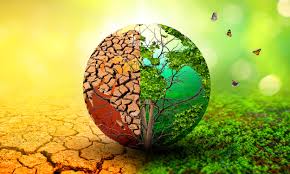
The relationship between climate change and biodiversity is complex and deeply interconnected. As climate change continues to alter ecosystems and species distributions, it poses significant challenges to biodiversity and the essential services it provides. Understanding these impacts and developing effective strategies for mitigation and adaptation are crucial for safeguarding our planet’s natural heritage.
By prioritizing sustainable practices, enhancing conservation efforts, and fostering community engagement, we can work towards a future where both biodiversity and climate resilience are supported. Ultimately, the health of our planet, our ecosystems, and our well-being depend on our ability to address the challenges posed by climate change and protect the rich tapestry of life that sustains us all.

